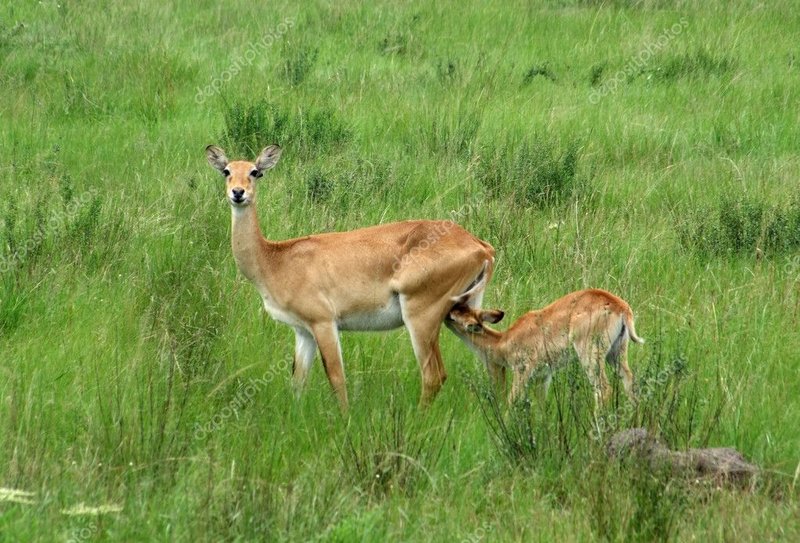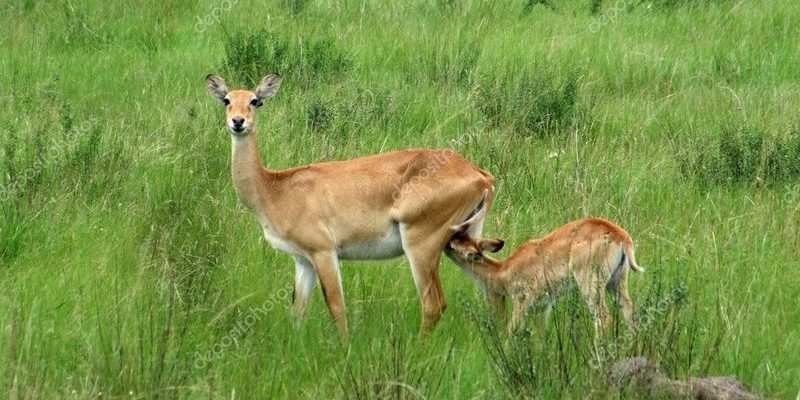
You might be wondering how exactly they do this. Well, like many animals, Ugandan kobs have their own unique rituals and behaviors that help their young thrive. In this article, we’ll explore the various stages of raising kob calves, from birth to independence, and how these animals navigate the ups and downs of parenthood in the wild.
The Birth of a Kob Calf
Let’s start at the beginning—birth. The gestation period for a Ugandan kob typically lasts about 7-8 months. A female kob, or doe, will find a secluded area in tall grass to deliver her calf. This is a crucial step, as it helps protect the newborn from predators. The first few moments after birth are critical. The calf, often weighing around 5 to 6 kilograms, is born with a soft, reddish-brown coat that helps it blend into the grass.
Once the calf is born, the mother will clean it up, encouraging it to stand and walk within a few hours. It’s pretty amazing how quickly these little ones adapt. They have to be able to follow their mother and escape potential threats right away. You might say it’s like a crash course in survival!
The mother stays close to her newborn, providing both protection and nourishment. During the first few weeks, the calf feeds solely on its mother’s milk. It’s packed with nutrients essential for growth—much like how a human baby relies on its mother during those early months.
Bonding and Social Structure
The social structure of Ugandan kobs plays a huge role in the upbringing of young calves. These animals are known for their strong herd mentality. They move and feed together, creating a community that fosters safety and learning. You might think of it as a bustling neighborhood where all the parents keep an eye on the kids.
In the herd, you’ll find a variety of age groups. This diversity is beneficial for the calves. They learn not only from their mothers but also from watching older kobs. For instance, older siblings or cousins might teach the little ones how to graze or what to watch out for in terms of predators.
Interestingly, while the mother is the primary caregiver, other females in the herd will sometimes nurse the calves if the mother is absent. It’s almost like having a built-in babysitter. This communal approach increases the chances of survival, as the calves benefit from the care of multiple adults.
Feeding and Nutrition
As the calves grow, their diet gradually shifts. After a few weeks, they start to nibble on grass and leaves, supplementing their milk intake. This is a crucial time for dietary adjustment. Think of it like a toddler learning to eat solid food—it’s an important step toward independence.
Ugandan kobs primarily feed on grasses, herbs, and shrubs. Mothers often lead their young to areas rich in nutritious vegetation. The calves quickly learn what to eat and what to avoid, refining their palates as they explore. Watching them graze together is a beautiful sight, where young kobs practice foraging alongside their mothers.
Additionally, the success of this training can significantly impact the calves’ future. Young kobs that learn to forage effectively are more likely to grow strong and healthy. It’s their ticket to standing out in the competitive wild.
Predator Awareness and Protection
In the wild, danger lurks around every corner. Predators like lions, hyenas, and leopards are always looking for a meal. The mothers take on the responsibility of teaching their young about these threats. Here’s where instinct kicks in. Kobs are naturally wary animals, and they quickly learn to be alert.
Mothers will often lead their calves to safer, open areas if they sense danger. Calves are trained to stay close and follow their mothers’ lead. You might say it’s like a game of “follow the leader,” where timing and awareness are everything.
Additionally, if the herd senses danger, they might form a protective circle, putting the young in the center. This method is an impressive display of teamwork and ensures the calves have a better chance to survive an attack. It’s heartwarming to see how they work together, much like a well-coordinated team.
Getting Ready for Independence
As the calves reach about six months old, they’re on the verge of independence. They still rely on their mothers for guidance and safety, but they start to venture further away, testing their skills. This stage is comparable to teenagers pushing boundaries while still needing a safety net.
Mothers begin to encourage their young to explore more and interact with other calves. It’s all part of preparing them for the world outside their cozy family unit. During this time, young kobs often form friendships with their peers, which helps them learn social dynamics and establishes their place in the herd.
As they approach one year old, it’s time for the calves to stand on their own. While they still might stay close to their mothers, they begin to participate more fully in herd life. At this point, you can see the transformation from helpless newborns to confident young antelopes ready to face the world.
The Role of Males in the Group
While the females primarily handle the rearing of young kobs, it’s worth mentioning the role of males in the herd. Adult males tend to take on different responsibilities compared to females. Their main focus is on competing for territory and mating rights, but they also contribute to the safety of the herd.
When males are present, they often act as lookout points, standing watch while the females and calves feed. Their vigilance helps alert the herd to potential dangers. You could say they play the role of the “guard dog” of the group.
However, it’s not uncommon for younger males to be pushed out as they mature. These males spend some time alone or in smaller bachelor groups before they can establish their own territory and attract mates. It’s a challenging journey, but it’s part of the cycle of life.
In summary, the way Ugandan kobs raise their young showcases the beauty of nature’s strategies for survival. From the moment a calf is born, the mother and the herd work together to ensure safety, nutrition, and learning. The communal care and shared responsibilities highlight a rich social structure that’s essential for the calves’ development.
As they transition from vulnerable newborns to independent youngsters, these kobs embody resilience and teamwork. Watching these gentle antelopes in their natural habitat offers us a peek into the complexities of wildlife parenting—reminding us of the importance of community and cooperation in nurturing the next generation. So, the next time you think about animal families, remember the Ugandan kob and their remarkable journey through life.

